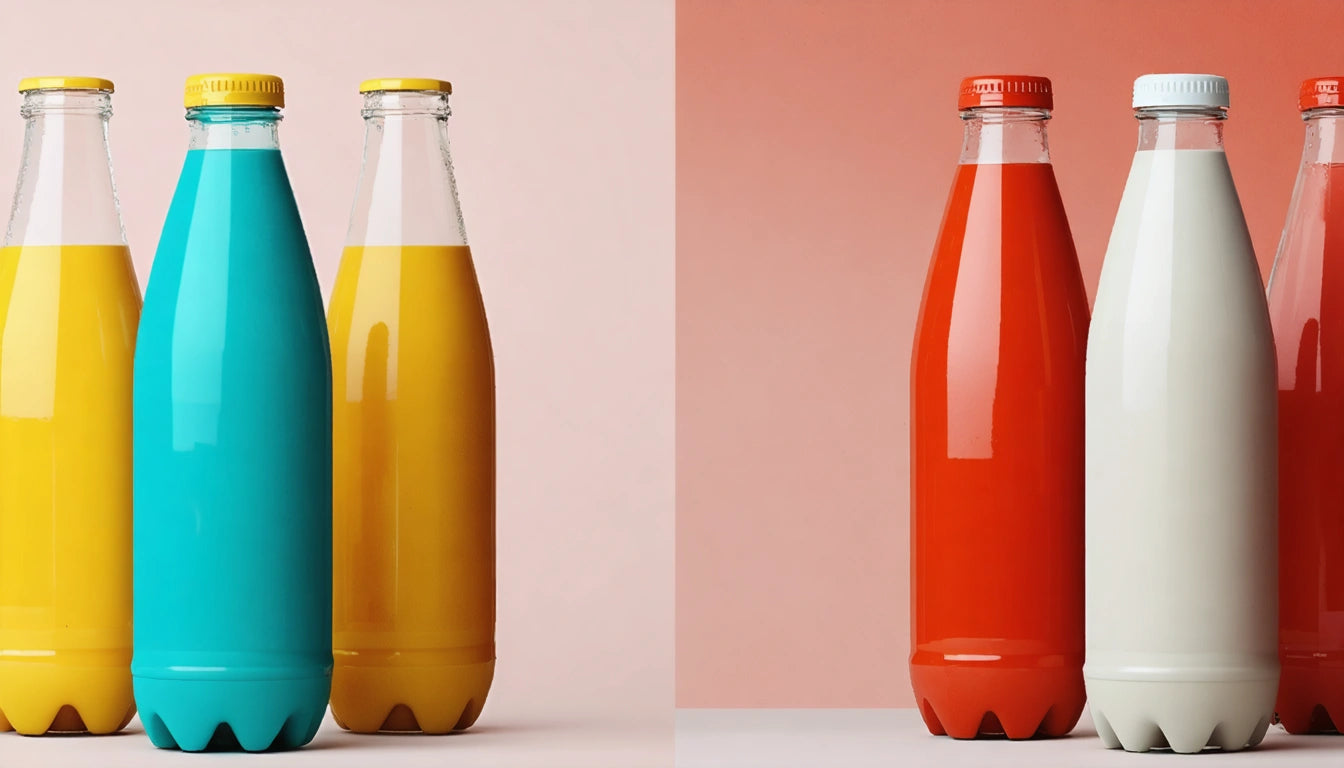Table of Contents
Matte vs. Glossy: Understanding the Differences and Choosing the Right Finish
When designing packaging, marketing materials, or product containers, one of the most important decisions is selecting between matte and glossy finishes. This choice affects not just aesthetics but also functionality, brand perception, and even product protection. Understanding what is the difference between matte and glossy finishes can significantly impact your brand's visual identity and customer experience.
Defining Matte and Glossy Finishes
Matte finishes feature a non-reflective surface that diffuses light rather than reflecting it. This creates a smooth, flat appearance without shine. In contrast, glossy finishes have a reflective quality that bounces light, creating a shiny, polished look.
The technical difference lies in how the surface is treated during manufacturing. Matte and gloss finishes are created through different coating processes, with matte requiring additional texturing agents that reduce reflectivity.
Visual and Tactile Differences
Visual Impact
Glossy finishes provide:
- Higher color saturation and vibrancy
- More apparent contrast
- A perception of depth
- Eye-catching reflectivity
Matte finishes offer:
- Subdued, sophisticated appearance
- Reduced glare and reflections
- A more contemporary, premium feel
- Better readability in bright lighting
Tactile Experience
The difference between glossy and matte finish extends to how they feel. Matte surfaces typically have a soft, velvety texture that many consumers associate with luxury. Glossy surfaces feel smooth and slick, creating a different kind of premium impression.
Practical Applications for Different Industries
Different industries favor specific finishes based on functional requirements and brand positioning. In the cannabis industry, matte finishes often signal premium, adult-oriented products, while glossy finishes can highlight vibrant branding and eye-catching designs.
For printing materials, the decision between coated and uncoated paper often aligns with matte or glossy finish considerations. Coated papers typically support glossier finishes, while uncoated papers naturally provide a more matte appearance.
Durability and Performance Factors
When considering matte finish vs glossy finish, durability becomes an important factor:
Glossy Finish Durability
- More resistant to moisture
- Easier to clean and wipe down
- Shows scratches and fingerprints more prominently
- May reflect light in ways that make viewing difficult
Matte Finish Durability
- Better at hiding fingerprints, smudges, and minor scratches
- Less glare makes content more readable in various lighting
- May be more susceptible to staining
- Often requires special cleaning considerations
For operational efficiency, the right finish also matters when using automated filling equipment for packaging products, as certain finishes may perform better with specific machinery types.
Packaging Considerations for Cannabis Products
In cannabis packaging, the shiny vs matte decision carries particular importance. Child-resistant packaging often uses specific finishes that balance regulatory compliance with brand aesthetics. The material choice between glass and plastic containers also influences what finish options are available.
For concentrate packaging, glossy finishes may better showcase product visibility, while matte finishes might communicate a more pharmaceutical, wellness-oriented approach. The difference between glossy and matte often becomes part of the brand's visual language and positioning strategy.
Making Your Choice: Key Decision Factors
When deciding between matte or glossy finish, consider these factors:
- Brand Positioning: Luxury brands often lean toward matte for its sophisticated appearance, while value brands might use glossy to maximize visual impact.
- Product Protection: Consider how the finish affects barrier properties against light, moisture, and oxygen.
- Printing Requirements: Some designs and color systems reproduce better on specific finishes.
- Target Audience: Younger demographics may respond better to glossy, eye-catching finishes, while older consumers might prefer the understated elegance of matte.
- Functional Needs: Consider where and how the packaging will be displayed, stored, and handled.
Understanding what is the difference between matte and glossy finishes allows brands to make strategic choices that enhance product presentation while meeting practical requirements. The right finish becomes an integral part of the product experience, influencing everything from shelf appeal to unboxing satisfaction.
Whether you choose matte for its sophisticated understatement or glossy for its vibrant impact, this decision should align with your overall brand strategy and the specific needs of your product and target market.











Leave a comment
All comments are moderated before being published.
This site is protected by hCaptcha and the hCaptcha Privacy Policy and Terms of Service apply.